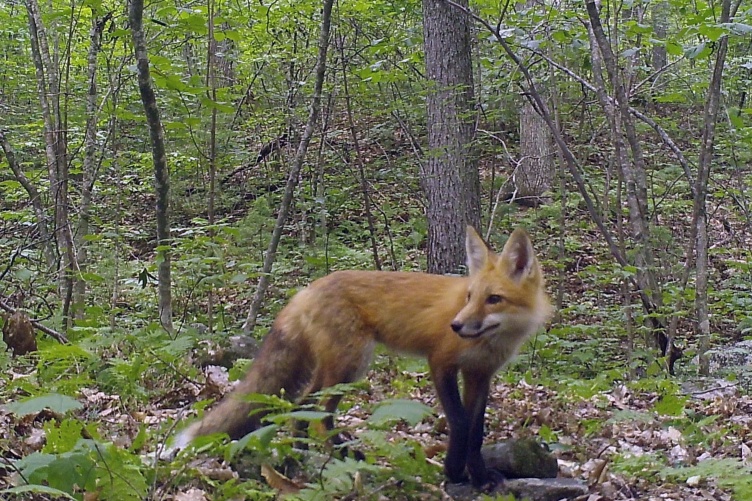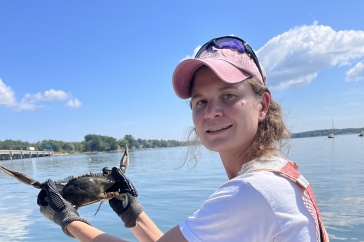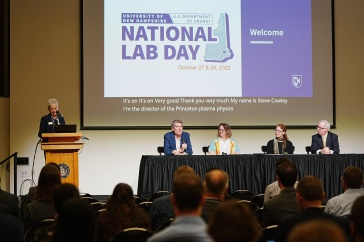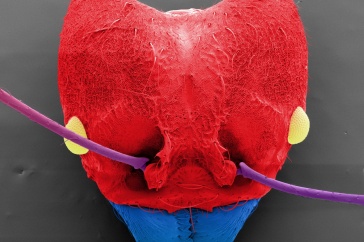
Researchers are developing a unique monitoring system for wildlife in the Granite State to help inform management and conservation decisions.
With more than 81 percent of New Hampshire represented by forested lands home to more than 500 vertebrate animals, the Granite State's wildlife populations are important to the ecological, recreational, and economic sustainability of the state. Managing and conserving New Hampshire’s wildlife species requires robust data on where they are located and the size of their populations. However, this information often is challenging to obtain as many wildlife species are difficult to monitor, and populations fluctuate from year to year.
As a result, researchers with the New Hampshire Agricultural Experiment Station at the UNH College of Life Science and Agriculture, in cooperation with the New Hampshire Fish and Game Department, are developing a unique monitoring system for wildlife in the Granite State to help inform management and conservation decisions.
“Accurately and effectively monitoring wildlife populations is a long-standing and ever-evolving challenge. Yet, it is a challenge that is critical to address because management and conservation decisions must be based upon reliable data and the best available science,” said experiment station researcher Rem Moll, assistant professor of natural resources and the environment.

“We are using sophisticated statistical models to analyze the images collected by wildlife cameras to monitor wildlife distribution and abundance, with an emphasis on furbearer species, including coyotes, red and gray foxes, fishers, and bobcats,” Moll said.
Researchers are analyzing more 250,000 wildlife images recorded by trail cameras at more than 145 research sites throughout southeastern and central New Hampshire. The data will be used to improve their monitoring methods. Scientists then will expand the study across the entire state.
Expenditures in New Hampshire for wildlife viewing exceed $280 million annually, according to the U.S. Fish and Wildlife Service. Even if Granite Staters do not see many wildlife species regularly, they often still strongly value them, Moll said.
“We have been encouraged with the strong support of our state partners, the New Hampshire Fish and Game Department, and the New Hampshire Agricultural Experiment Station, as well as dozens of town conservation commissions, land trusts, and other entities such as the U.S. Fish and Wildlife Service that have allowed us to collect data on their land. This support has given us the ability to develop a strong research program, which would not be possible without generous land access permissions,” Moll said.
Patrick Tate, furbearer biologist with the New Hampshire Fish and Game Department, said the department monitors wildlife using several techniques that vary by species. The most common are public observations, hunter observation, harvest, harvest rates, and trail cameras, known as camera traps.
“Monitoring wildlife presence and abundance is challenging given wildlife's ability to avoid interaction with humans and human-dominated landscapes while human activity is occurring. The research Dr. Moll is conducting has potential to create an additional method to monitor wildlife species. This work can provide models independent of harvest data for species, which have hunting or trapping seasons,” Tate said.
This material is based upon work supported by the NH Agricultural Experiment Station, through joint funding of the National Institute of Food and Agriculture, U.S. Department of Agriculture, and the state of New Hampshire.
Founded in 1887, the NH Agricultural Experiment Station at the UNH College of Life Sciences and Agriculture is UNH’s first research center and an elemental component of New Hampshire's land-grant university heritage and mission. We steward federal and state funding, including support from the USDA National Institute of Food and Agriculture, to provide unbiased and objective research concerning diverse aspects of sustainable agriculture and foods, aquaculture, forest management, and related wildlife, natural resources, and rural community topics. We maintain the Woodman and Kingman agronomy and horticultural research farms, the Macfarlane Research Greenhouses, the Fairchild Dairy Teaching and Research Center, and the Organic Dairy Research Farm. Additional properties also provide forage, forests, and woodlands in direct support to research, teaching, and outreach.
-
Written By:
Lori Tyler Gula, PhD | NH Agricultural Experiment Station | lori.gula@unh.edu | 603-862-1452



















































